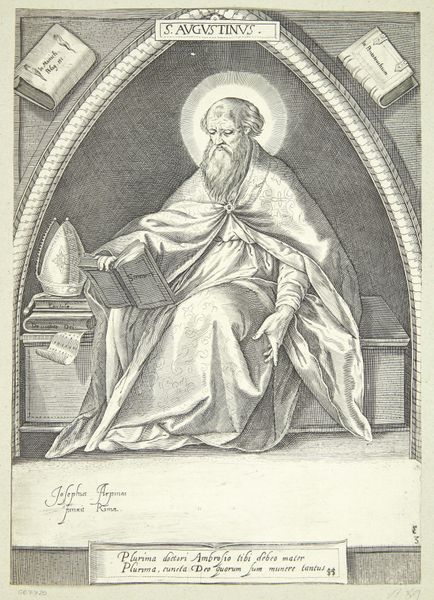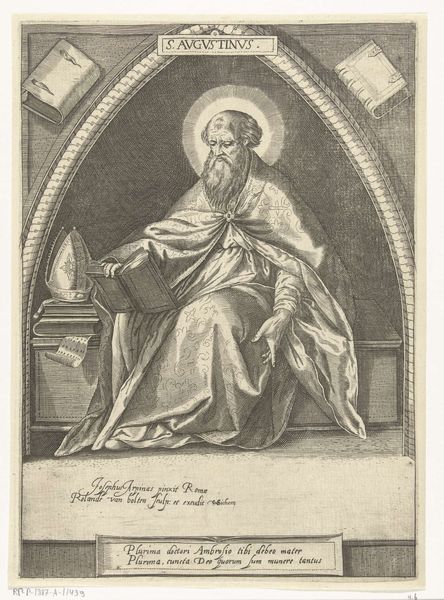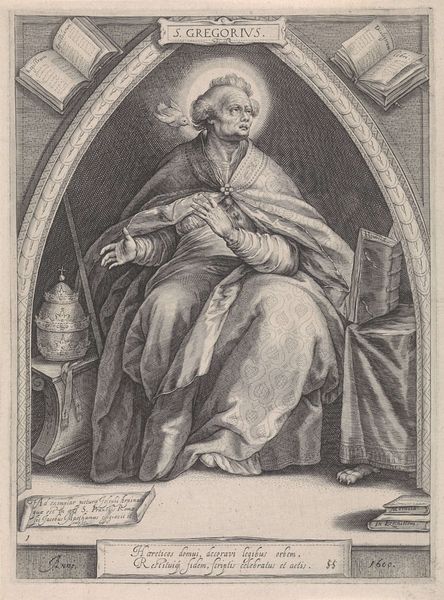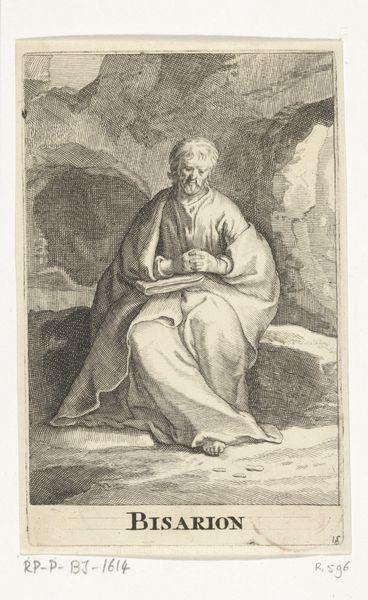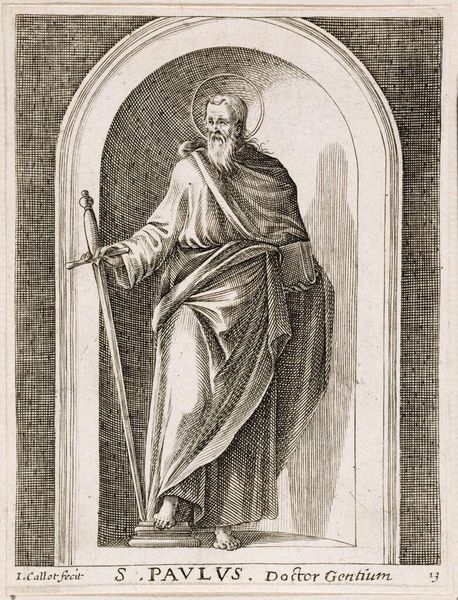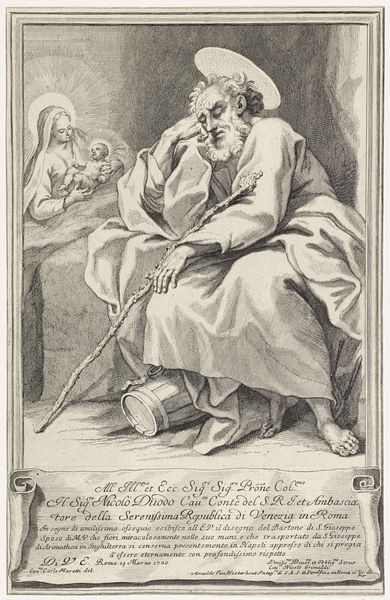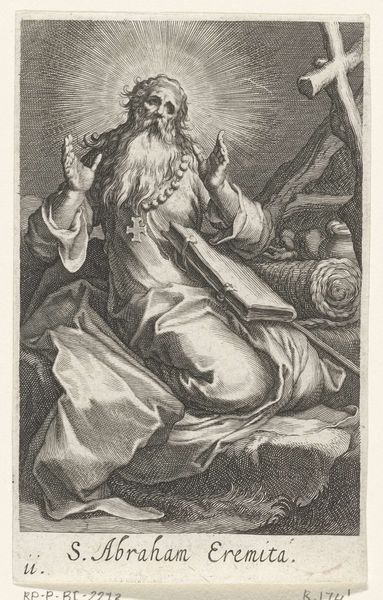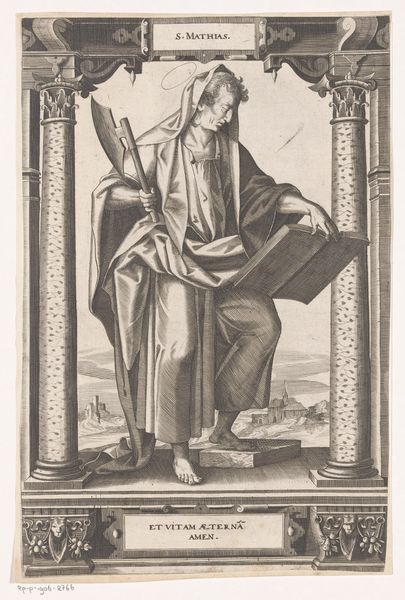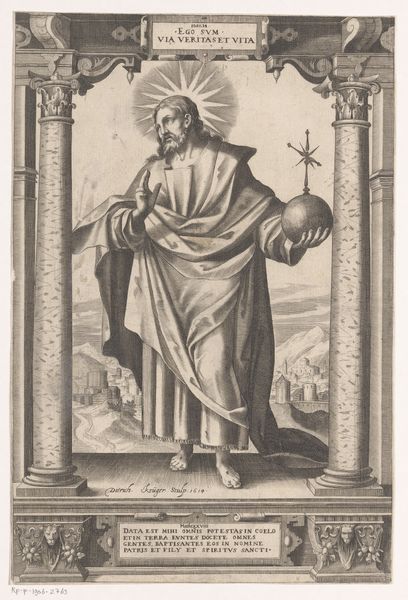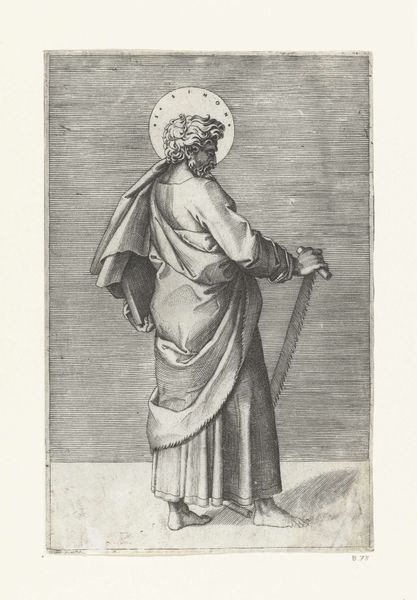
print, engraving
#
portrait
#
medieval
#
baroque
# print
#
old engraving style
#
portrait drawing
#
history-painting
#
engraving
Dimensions: height 295 mm, width 219 mm
Copyright: Rijks Museum: Open Domain
Editor: This print, made around 1600 by Jacob Matham, is called "H. Ambrosius als kerkvader," or "St. Ambrose as a Church Father." The intricate lines really capture the texture of his robes. What stands out to you about this piece? Curator: Considering Matham’s process reveals a great deal. Look at the precise technique required to produce this engraving. It involved specialized labor, from the artist to the printer and distributors, making religious knowledge accessible in a reproducible form. Editor: So, it's less about the image of St. Ambrose himself, and more about the process of how it came to be? Curator: Precisely. How was knowledge produced and circulated in 17th-century Europe? The print medium allowed for a democratization of sorts, compared to unique paintings only afforded by the wealthy. We can trace how devotion becomes something that's purchased and reproduced. Notice the inclusion of text here - is that accessible to a wider audience through prints such as this? Editor: That's interesting; the Latin text certainly speaks to that. Does the paper type itself influence the perceived value or accessibility of this print? Curator: Absolutely! Cheaper paper meant wider distribution. Also, consider how prints were often hand-colored, adding another layer of skilled labor and customization influencing both cost and artistic expression. Editor: I never thought about it that way! It shifts my perspective completely. Seeing art as a product of so much collective work…it's really fascinating. Curator: Right? Analyzing the materials and mode of production illuminates social dynamics and the economics of artistic creation and religious dissemination during the time.
Comments
No comments
Be the first to comment and join the conversation on the ultimate creative platform.
